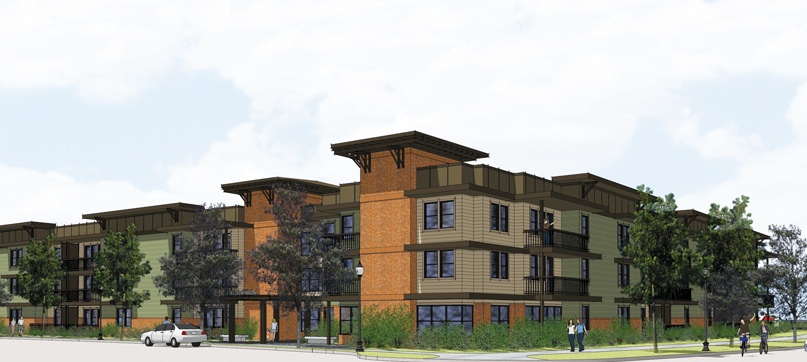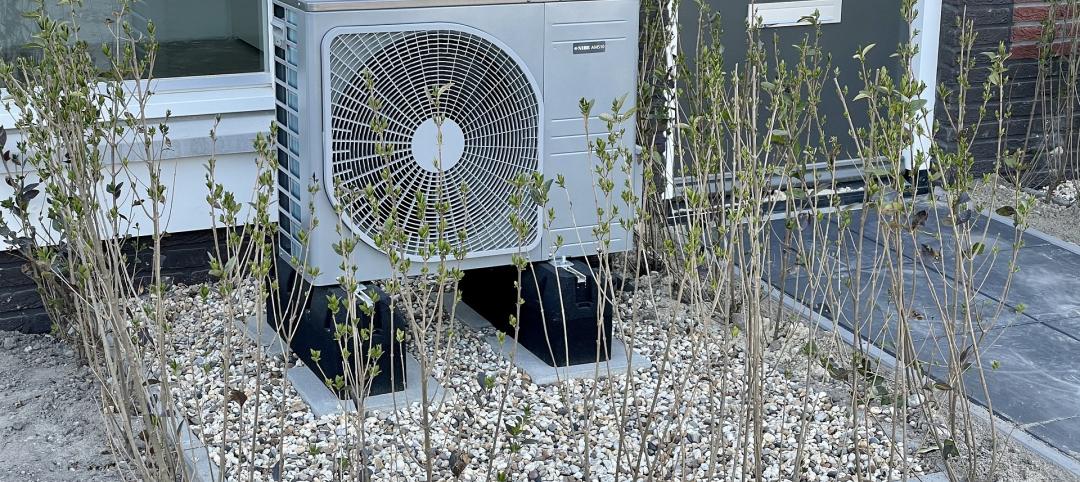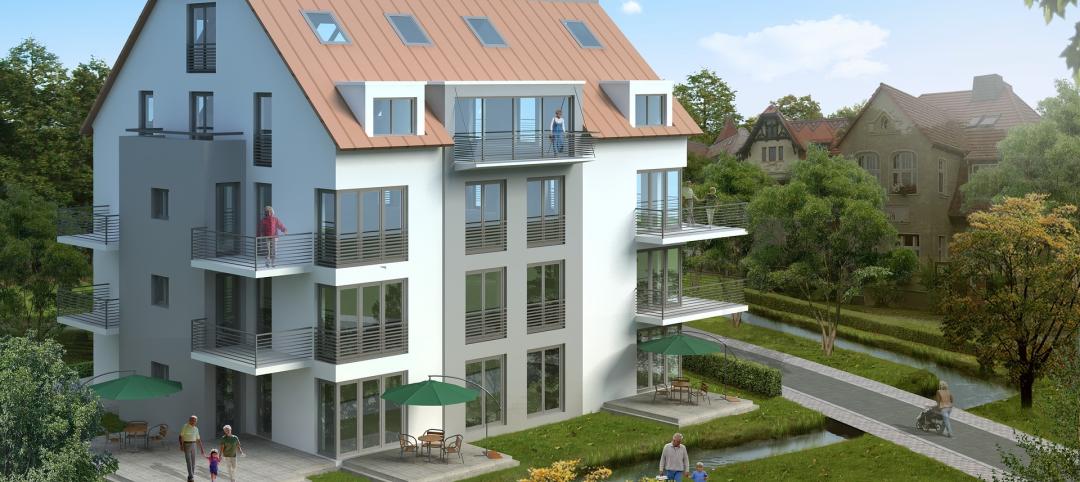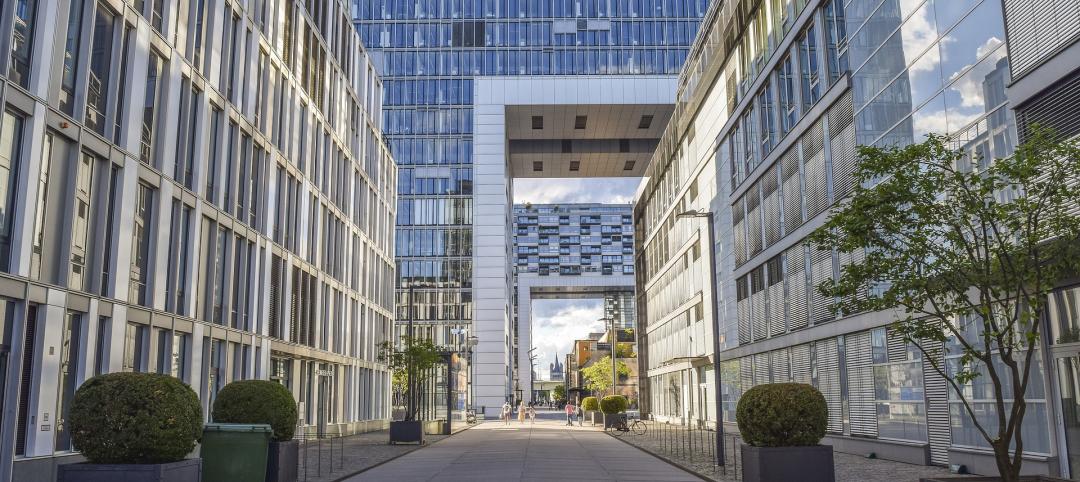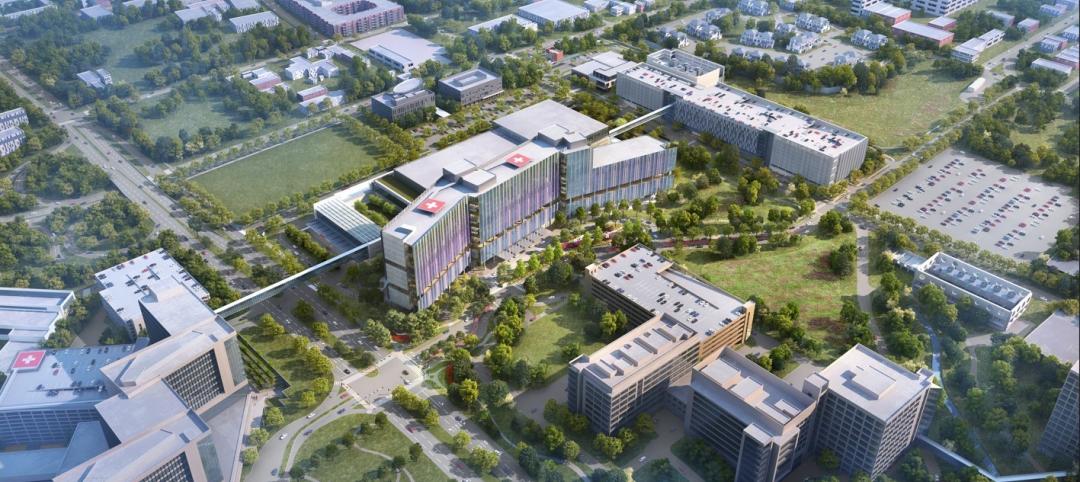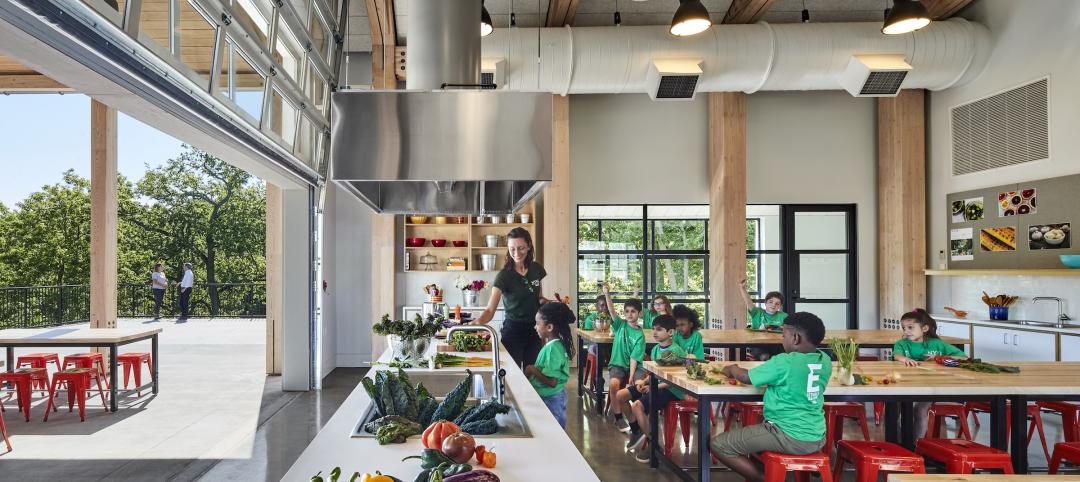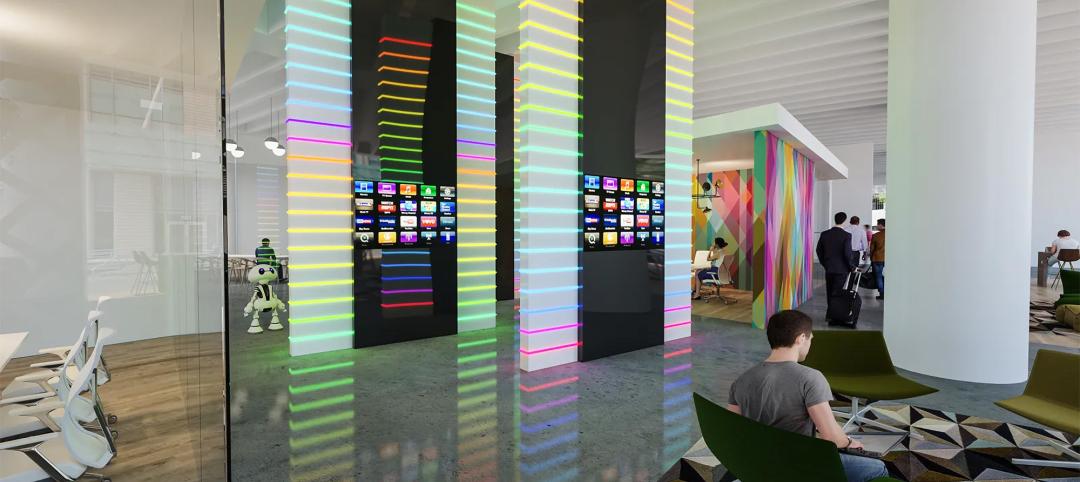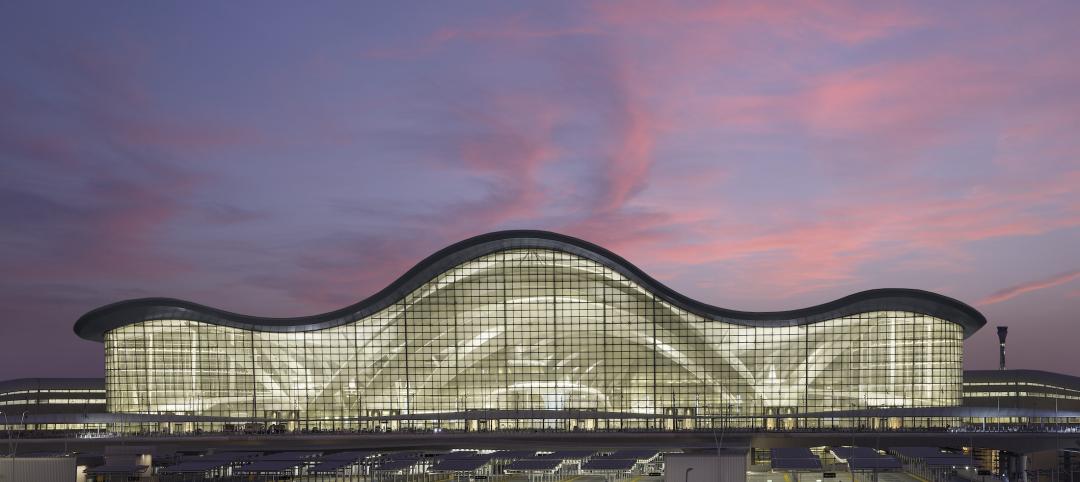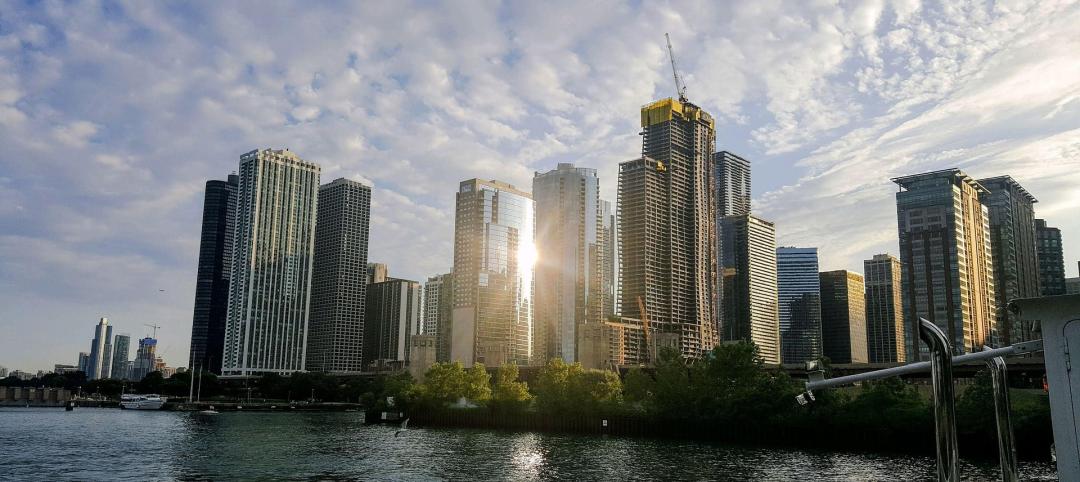Passive House, an ultra-efficient building standard that originated in Germany, has been used for single-family homes since its inception in 1990. Only recently has the concept made its way into the commercial market.
The Passive House standard requires buildings to use at least 80% less energy than a comparable conventional building, so air tightness is a must. The structure must be completely sealed against any air infiltration, at the same time preventing conditioned air from escaping. This means Building Teams must employ multiple layers of insulation in the walls, roof, and flooring, plus continuous air barriers and reliable windows and doors.
Once the building is completely sealed, a number of techniques can be engaged to regulate the temperature. Energy-recovery ventilators may be employed to keep a constant supply of fresh air circulating throughout the home. These heat exchange systems typically recycle the heat of exhaust air from kitchens and bathrooms by filtering it through the fresh air entering from the outside. This saves energy costs.
An analysis of the site and its climate also must also be completed. Effective planning of the window orientation can have a direct impact on the amount of natural daylight that will penetrate the space. Shading devices can be designed to control the amount of sun entering the space at any given time, which can contribute to heat gain.
Passive House enters the hospital sector
The Passive House concept is also spreading to other nonresidential sectors. The machinery and lighting required to run hospitals make them the largest users of energy across commercial sectors. In the Hoechst district of Frankfurt, Germany, a hospital renovation is set to become the first Passive House hospital in the world.
The state of Hesse completed a baseline study to determine the methods for executing such a large-scale PH project. The study notes that ventilation, heating and cooling, water, hygiene, and food service should all be considered when planning building systems around the Passive House standard in a healthcare setting. The study recommends the use of energy-efficient equipment, but notes that many medical devices have not yet been rated for their energy efficiency.
In multifamily buildings, the ratio of interior livable space to building envelope size is greater than that of a single-family home, so the envelope work is somewhat less demanding. Even so, the number of windows, doors, and balconies in multifamily projects means even more areas of the façade are vulnerable to air infiltration and expiration.
Despite these difficulties, commercial Building Teams are rising to the challenge. According to the Passive House Institute U.S., as of June 2014, 21 multifamily projects have been submitted for PHIUS Passive House certification: four have been fully certified, another four have been precertified and are under construction.
Stellar Apartments, Eugene, Ore., was the first multifamily project to achieve certification. Designed by Bergsund DeLaney Architecture & Planning for the St. Vincent de Paul Society of Lane County, this low-income housing project consisted of the construction of two nearly identical buildings.
The first, built to the Eugene Water and Electric Board’s Earth Advantage Standards, was designed to save 15% more energy versus a home built to code. The Building Team designed the second building to Passive House standards. The two buildings have identical floor plans, with six units on two stories, and are oriented in the same direction with similar shading. The main difference between them is the air tightness and the use of an energy-recovery system in the Passive House building.
The buildings were completed in July 2013, and are under study by students at the University of Oregon. The researchers will compare the energy use and cost savings, air quality, light quality, and acoustics of the buildings to determine whether a significant difference exists.
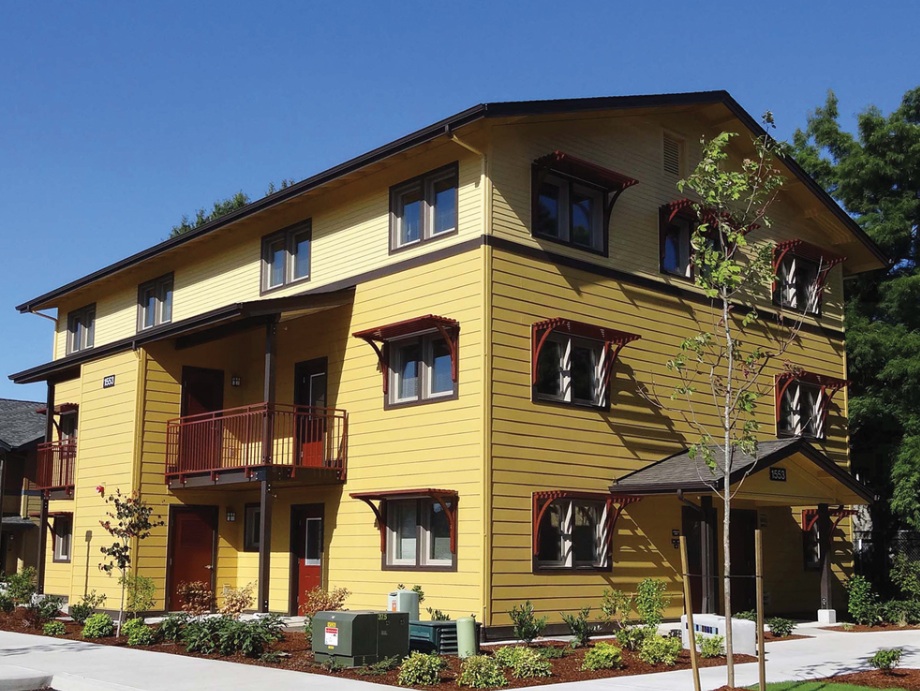
Stellar Apartments in Eugene, Ore., consists of two nearly identical low-income apartment buildings built to different sustainable standards. One meets the city’s Earth Advantage Program requirements, while the other (pictured above and left) is the first multifamily building to achieve Passive House certification. The Building Team included St. Vincent DePaul Society of Lane County (owner), Bergsund DeLaney Architecture & Planning, Hohbach-Lewin Inc., Poage Engineering, and Dougherty Landscape Architects. Photo: courtesy Bergsund DeLaney Architecture & Planning
The Orchards at Orenco is currently under construction in Hillsboro, Ore. Phase 1 of this affordable housing project, owned by REACH Community Development, includes 57 units, making it the largest precertified Passive House building to date.
The facility will employ traditional methods of Passive House construction—a continuous air barrier, extra insulation, and heat recovery system—to achieve up to 90% reduction in energy bills for the tenants. The roof will be light in color to reflect solar heat; it will have a foot of insulation, which is almost four times that required by the local building code.
The Building Team is using triple-pane glazed windows, with European-style tilt-turn operation. It is common for Passive House buildings to use windows made in Europe, as double-hung or slider windows manufactured in the U.S. do not offer the tightness required for PH certification.
Building Teams can apply some of the principles to multifamily projects, regardless of whether they are able to achieve full certification. Extra insulation, greater attention to detail when sealing the building envelope, and energy-efficient heating and cooling systems can have a positive effect on a building’s performance regardless of whether the building is able to carry the Passive House label.
Related Stories
MFPRO+ News | Feb 15, 2024
Nine states pledge to transition to heat pumps for residential HVAC and water heating
Nine states have signed a joint agreement to accelerate the transition to residential building electrification by significantly expanding heat pump sales to meet heating, cooling, and water heating demand. The Memorandum of Understanding was signed by directors of environmental agencies from California, Colorado, Maine, Maryland, Massachusetts, New Jersey, New York, Oregon, and Rhode Island.
MFPRO+ News | Feb 15, 2024
Oregon, California, Maine among states enacting policies to spur construction of missing middle housing
Although the number of new apartment building units recently reached the highest point in nearly 50 years, construction of duplexes, triplexes, and other buildings of from two to nine units made up just 1% of new housing units built in 2022. A few states have recently enacted new laws to spur more construction of these missing middle housing options.
Green | Feb 15, 2024
FEMA issues guidance on funding for net zero buildings
The Federal Emergency Management Agency (FEMA) recently unveiled new guidance on additional assistance funding for net zero buildings. The funding is available for implementing net-zero energy projects with a tie to disaster recovery or mitigation.
Hospital Design Trends | Feb 14, 2024
Plans for a massive research hospital in Dallas anticipates need for child healthcare
Children’s Health and the UT Southwestern Medical Center have unveiled their plans for a new $5 billion pediatric health campus and research hospital on more than 33 acres within Dallas’ Southwestern Medical District.
Architects | Feb 13, 2024
Pierluca Maffey joins Carrier Johnson + Culture as new Firmwide Head of Design
Carrier Johnson + Culture (CJ+C) has hired Pierluca “Luca” Maffey, International Assoc. AIA, as the firm's new Firmwide Head of Design and Design Principal.
K-12 Schools | Feb 13, 2024
K-12 school design trends for 2024: health, wellness, net zero energy
K-12 school sector experts are seeing “healthiness” for schools expand beyond air quality or the ease of cleaning interior surfaces. In this post-Covid era, “healthy” and “wellness” are intersecting expectations that, for many school districts, encompass the physical and mental wellbeing of students and teachers, greater access to outdoor spaces for play and learning, and the school’s connection to its community as a hub and resource.
Office Buildings | Feb 13, 2024
Creating thoughtful tech workplace design
It’s important for office design to be inspiring, but there are some practical principles that can be incorporated into the design of real-world tech workplaces to ensure they convey an exciting, sophisticated allure that accommodates progressive thinking and inventiveness.
Airports | Feb 13, 2024
New airport terminal by KPF aims to slash curb-to-gate walking time for passengers
The new Terminal A at Zayed International Airport in the United Arab Emirates features an efficient X-shape design with an average curb-to-gate walking time of just 12 minutes. The airport terminal was designed by Kohn Pedersen Fox (KPF), with Arup and Naco as engineering leads.
Higher Education | Feb 9, 2024
Disability and architecture: ADA and universal design at college campuses
To help people with disabilities feel part of the campus community, higher education institutions and architects must strive to create settings that not only adhere to but also exceed ADA guidelines.
Codes | Feb 9, 2024
Illinois releases stretch energy code for building construction
Illinois is the latest jurisdiction to release a stretch energy code that provides standards for communities to mandate more efficient building construction. St. Louis, Mo., and a few states, including California, Colorado, and Massachusetts, currently have stretch codes in place.


